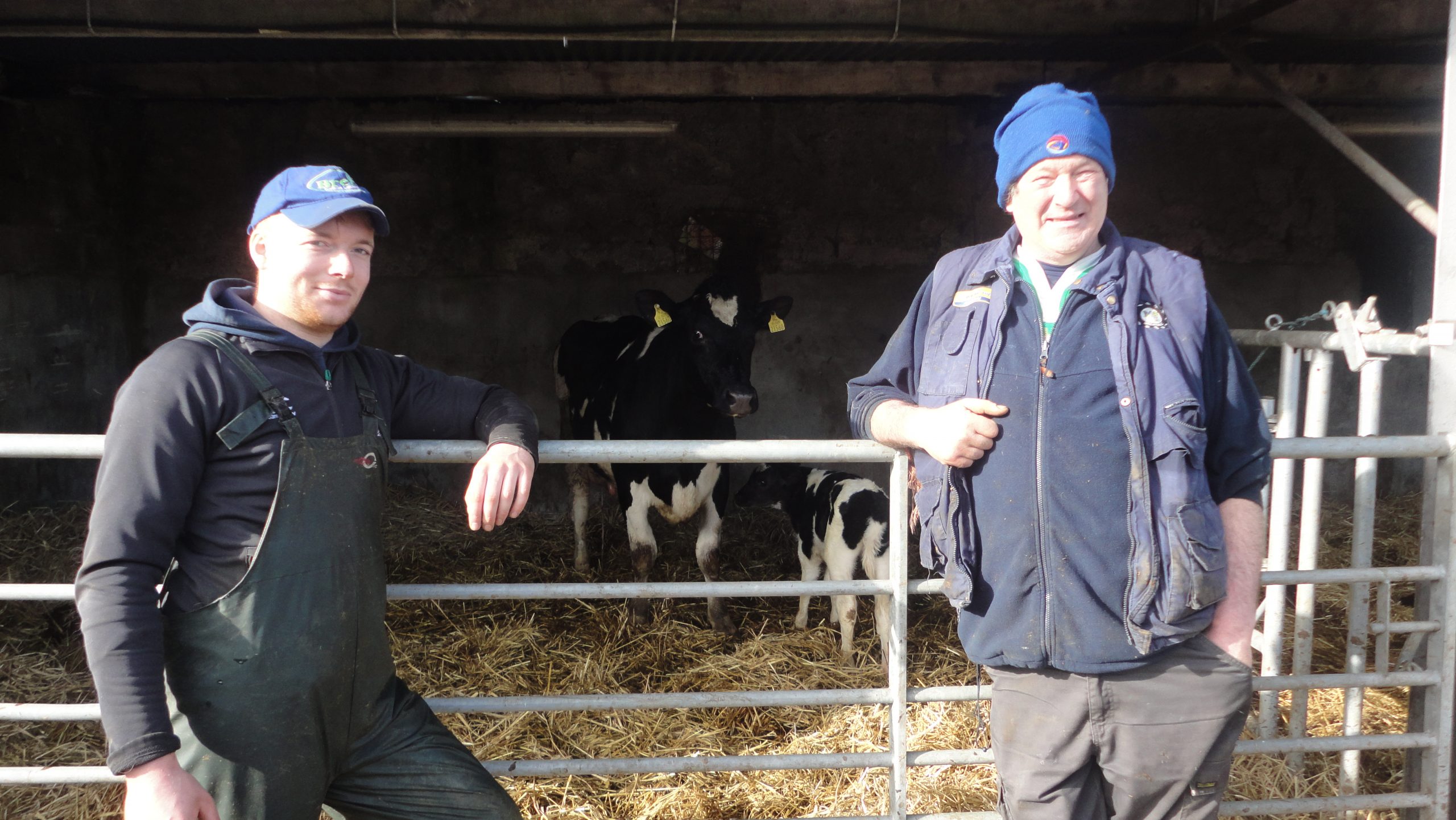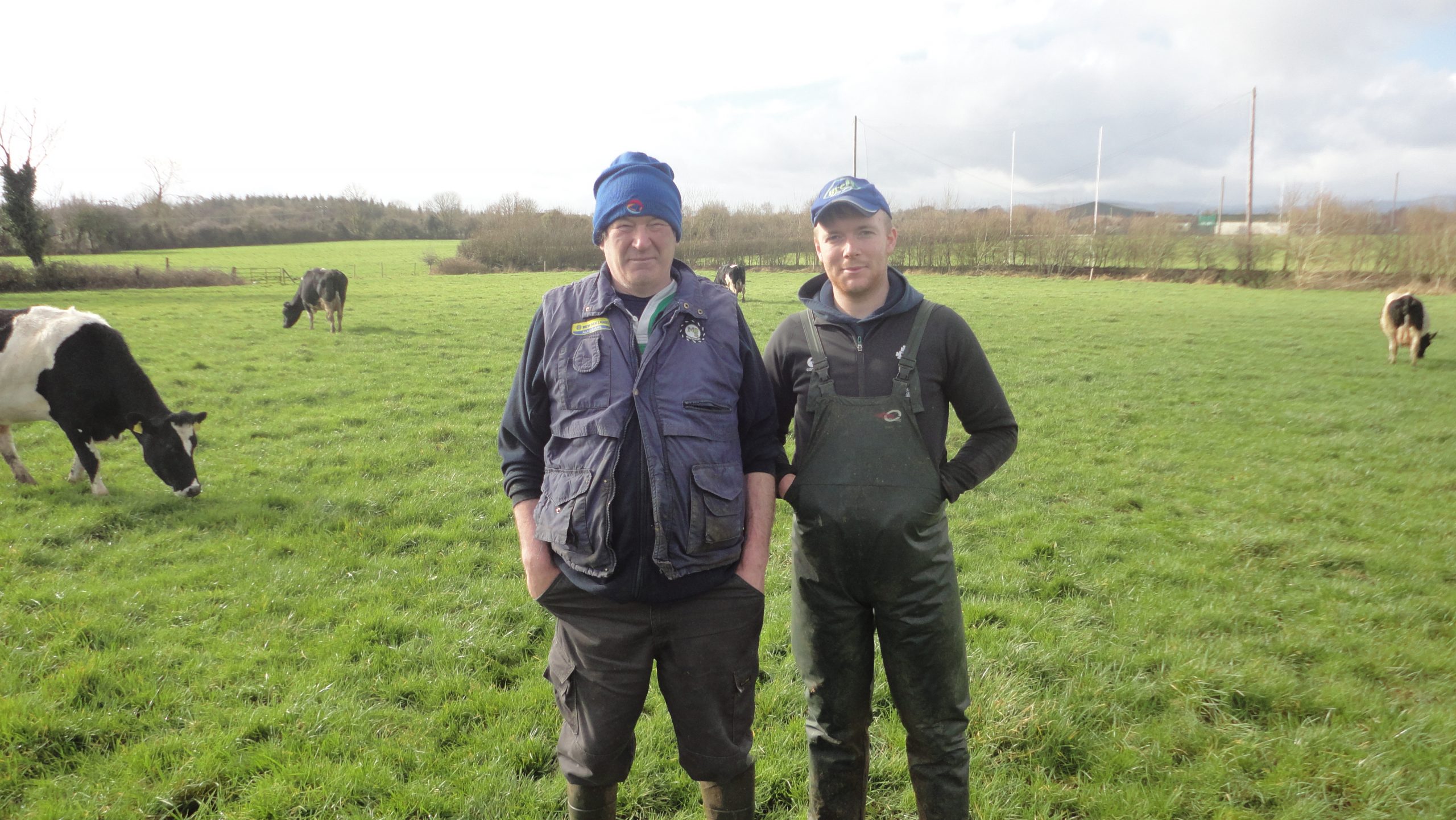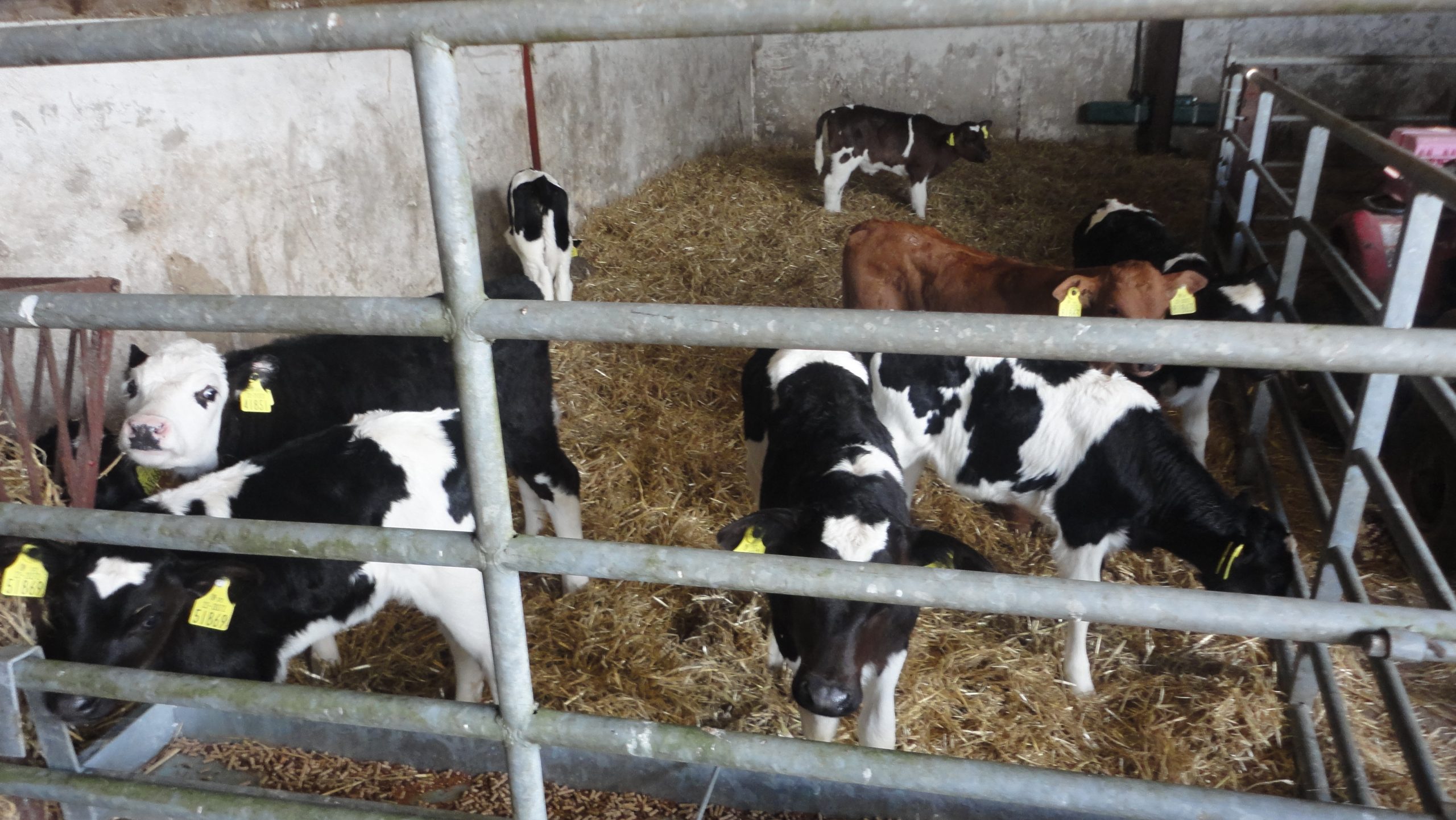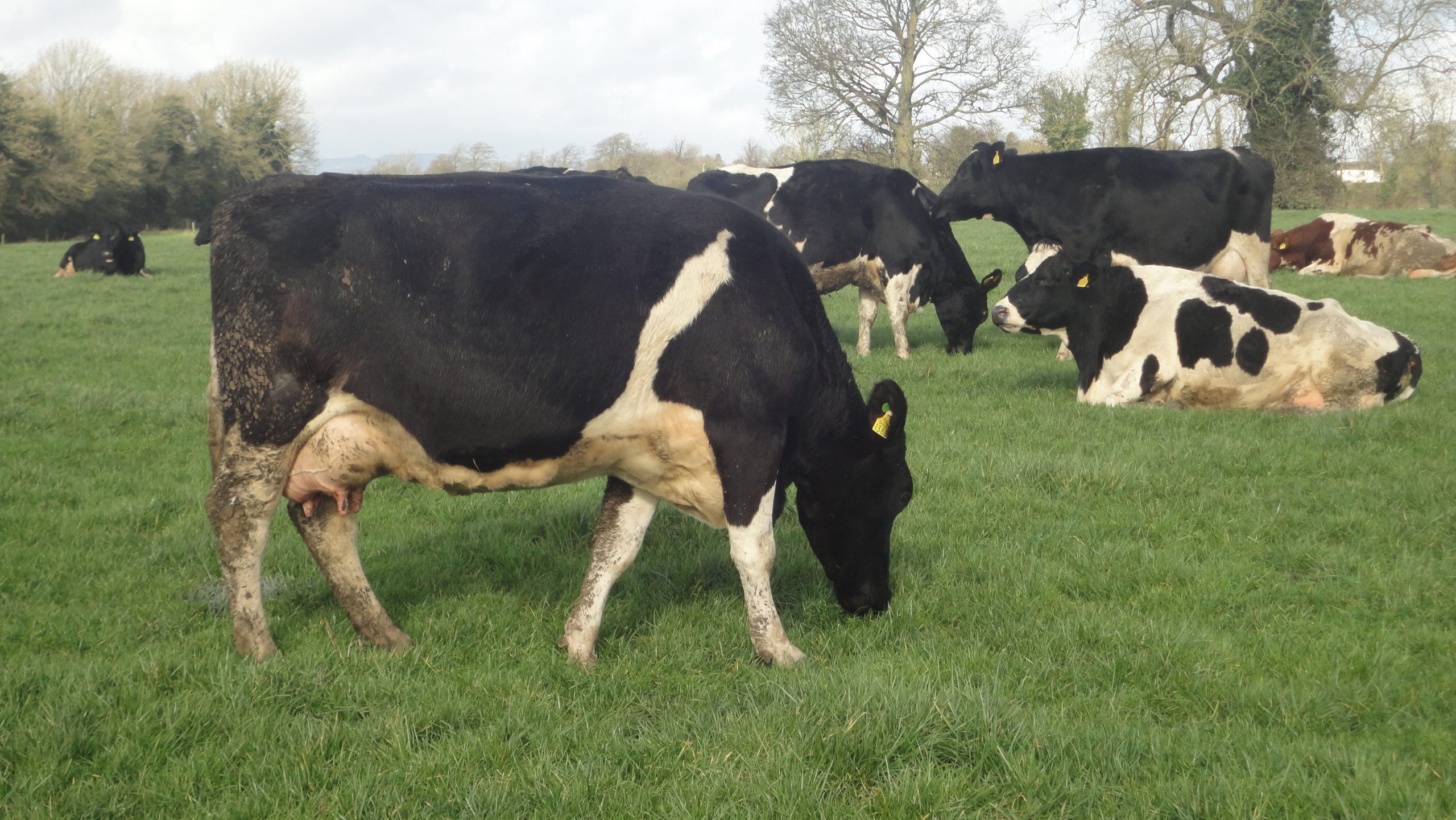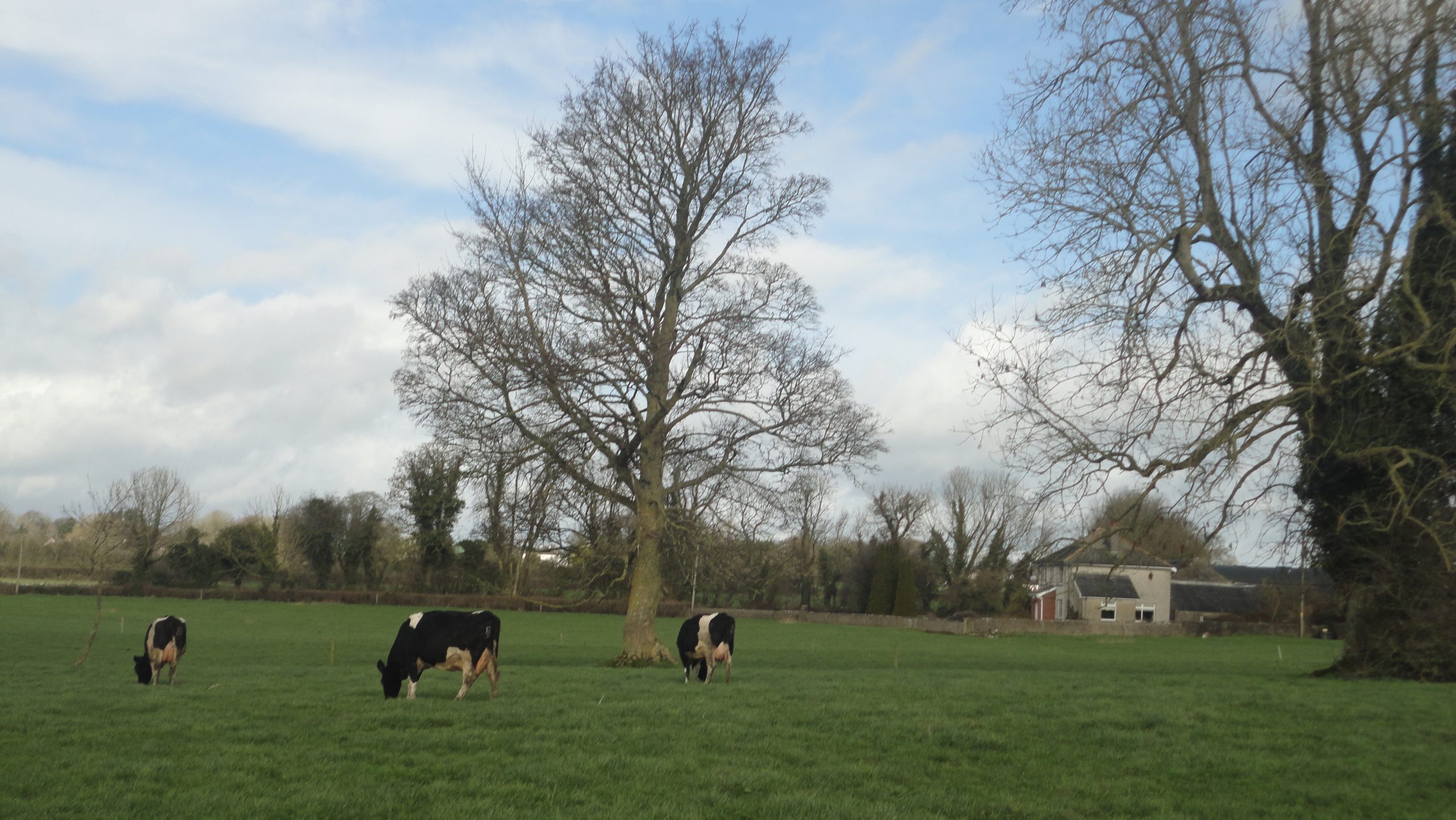John Long – Roadmill Herd
Sharing his know-how, off & online
A lifetime of quality Black and White breeding, with a beef enterprise, embracing environment conservation, new farming technologies & social media
John Long established the Roadmill prefix and began registering Friesians in 1980. Forty-one years to the good, John proudly carries on the solid legacy of pedigree, and he wears his ancestral roots steeped in foundational Friesian breeding as a badge of honour.
The familial link to pedigree Friesian breeding goes back to the previous generation to his uncles’ Jimmy and Toss Boilson, Parkstown herd. They registered their first pedigree Friesians on October 14th 1966, coinciding with the foundation of the Irish Friesian Breeders Association (IFBA). The brothers farmed in nearby Horse & Jockey, just eight kilometres away. Incidentally, Jimmy Boilson was a founding member of the Tipperary Waterford Friesian Breeders Club. Today, a “dream of a farm” consisting of a 123-acre milking platform with a further 67 leased acres, is home to the Roadmill herd. John continues the esteemed legacy as the third-generation farmer to farm the land, a shrewd purchase investment by his grandfather. Bolstering the overall farm operation is a pedigree Hereford herd and a significant calf to beef enterprise.
Location
The family farm is situated right on the edge of Thurles town, nestled in a secluded area with minimal urban disturbance on day-to-day farming. The Anner Hotel is just 1.5 kilometres away while Thurles landmark, Semple Stadium is a brief 3.5 kilometres walk. Thurles Golf Club is even closer.
Family
John is married to Josephine, who works off-farm as a nurse in Cashel. Eldest son, Eoin, is a qualified Chemical Engineer who works in Cork. Conor lives in New Jersey in the USA, where he is studying for a PhD in Industrial Chemistry at the New Jersey State University and is also lecturing part-time. Youngest son, Brian is a keen and talented up-and-coming young farmer, currently studying Agriculture in Munster Technological University. He also works off-farm with a local contractor on a part-time basis. John’s mother, Kitty, lived on the farm until recent times. For practical considerations she now resides with a daughter in Dublin.
Origins of the Herd & Changes over the Years
John registered Roadmill as his prefix choice when he commenced his farming career in 1980. “I was keen and ambitious, with an open mind for new ideas and a quest for knowledge, hell bent on being a successful farmer. Having a pedigree herd was foremost in my priorities. It would be the main platform from which to build for the future, to develop the herd and be successful. “My uncles Jimmy and Toss Boilson established their own registered herd under the Parkstown prefix in 1966 and this early influence of pedigree breeding certainly informed my thinking. The Parkstown herd ceased being in 1990 and the land that they farmed now forms part of the M8 motorway and its intersection with the Horse and Jockey hotel. “The early years was an exciting era of fast-paced transformational Friesian breeding. Local club sales were a very popular way to disseminate Friesian bloodlines.”
The first pedigree registered Friesian heifers purchased were
- Kylefarm Electra 56 bred by Tom Fives, Cappoquinn, Co. Waterford (b. 09/12/1977)
- Stradavoher Rosebud 8 bred by Liam Skehan, Ballycurrane, Thurles (b. 20/03/1978)
- Parkstown Angela 2 bred by Jimmy Boilson, Horse & Jockey, Thurles (b. 27/01/1978)
The herdbook certificates of these purchased heifers as well as the rosette won by Kylefarm Electra 56 on the day of the Club Show & Sale are meticulously preserved in treasured storage by John as a nod of respect to this formative era.
IFBA & Tipperary Waterford Club Tours & Trips
During this time, club field evenings both close to home and far away were availed of to learn more about breeding – to find out how breeders were improving their herds, be it through bloodlines, feeding regimes, milking parlour technology or whatever the emerging successful trends were.
“I relished the stock judging competitions at the field evenings. They were a fabulous way to hone your stockman’s eye. I was placed in the top three of the Tipperary Waterford club’s stock judging competition on three occasions. I then went forward to represent the club competing for the Fr. Collins trophy at the RDS Spring Show the following three years. This was a supreme honour.
“Club trips arranged through the Tipperary Waterford Club and the IFBA were extremely popular opportunities to travel. To see more of the world and to bring home new insights and drive your own herd forward, improving your situation overall. “Within the community of pedigree breeders everyone was ramping up output, completing on-farm infrastructure developments and embracing innovation.
“One especially memorable club trip was to the Essex region in England, where we viewed the Terling and Lavenham herds. They were such beautiful herds of immaculate standards. “Another trip that stands out long in the memory is the club visit to the Hayleys herd of Peter Padfield. It was my first experience of the Hunday feed-to-yield system which was ground-breaking technology at the time. “I’m a firm believer that travel broadens the mind. Without the club field evenings or organised tours, there simply would not have been an opportunity to travel and gain experience or to educate ourselves.
“Not only were these trips educational, they were really enjoyable social get-togethers. It’s a pity that trips now seem to be a thing of the past.” AI bulls from this era who left a lasting positive impression, due to the performance of their daughters in the herd, include Gortonian Crusader, Rydonwych Wayland, Gornal Benefit and Churchwell Clabet.A subsequent depopulation in 1997 and numerous TB outbreaks brought a shuddering halt to herd genetic progress. In adversity there is opportunity and from this imposition, John resolved to transform a bleak situation into a chance for new and renewed growth.
Around 2000 he embarked on a re-stocking mission, with a resolute policy to source the best Herdbook registered stock available to suit requirements. Evidence of his open-minded approach and willingness to try something new, he purchased a limited number of Holstein females with up to 90% breed fraction influence. The distinct cow families underpinning the performance of the Roadmill herd today descend from these successful formative purchases.
The highly successful Princess family was established with the astute purchase of Rathfarm Princess 28 (50% Friesian, 50% Holstein) – a Dovea Ned Boy daughter from breeder John Healy in Moneygall, Tipperary. A number of heifers purchased at the Tynan family Ardboy herd draft sale in 2000 proved very lucky in their new home, as the seed stock from which a number of families have flourished including Buttercup, Lupin, Mona, Mabel and Maybud.
5,833kgs milk, 468kgs milk solids, 4.17% fat, 3.62% protein delivered to the co-op last year.
“I estimate an additional 30-50kgs milk solids was produced by the calf value. Meal feeding per cow averaged 600kgs/cow. Herd EBI is currently €128. SCC of the herd last year was 92.”
Longevity, conformation & mature performance of Friesian breeding
33 cows of 4th lactation and older recorded 7,785kgs milk, 613kgs milk solids, 4.19% fat, 3.66% protein last year (317 days). Currently there are 16 VG/EX cows of 6th lactation or older in the herd. The known attributes and hallmarks of Friesian breeding for fertility, longevity and maturity are borne through in the Roadmill herd. As a consequence, surplus replacement breeding stock are available for sale each year and John has a steady list of repeat customers. This adds a further positive dimension to the incoming revenue streams. In addition, the emphasis on selecting for shapely conformation helps garner favourable cull cow prices, which is another positive contribution to the ledger.
Roadmill Alan Lupin EX90 4E and Roadmill Enigma April 2 VG85 both in their 9th lactation are the joint-oldest home-bred VG/EX cows. Roadmill Marshall Princess VG86 and Roadmill Sochar Princess VG85 are both in their 8th lactation. Roadmill Sochar Princess 2 EX90, Roadmill Kevin Linda VG88 and Roadmill Paj Janet VG85 are all in their 7th lactation.
Roadmill Alan Lupin EX90 4E
60,136kgs milk, 4,499kgs milk solids, 3.76% fat, 3.69% protein lifetime yield in eight lactations to date
Her grandam is Ardboy Buck Loop, a Besne Buck daughter purchased at the Ardboy sale in 2000.
Roadmill Enigma April 2 VG85
9,163kgs milk, 671kgs milk solids, 3.95% fat, 3.37% protein in her 8th lactation (340 days)
One of the highest fertility cows in the herd.Her daughter Roadmill Primo April GP80
7,090kgs milk, 564kgs milk solids, 4.06% fat, 3.89% protein in her 2nd lactation (307 days)
AI stud acquires Roadmill Bull to join its Sire Line-Up
Personal satisfaction and a sense of achievement encapsulated the selection and purchase of home-bred bull, Roadmill Pacific (RPF) by Dovea Genetics in 2011. Sired by Athol Enigma, Pacific is bred from the Princess family.
In charting his maternal line it’s interesting to peel back the layers as follows, beginning with Rathfarm Princess 28. Rathfarm Princess 28 was purchased in 1998. In her lifetime she completed nine lactations and imparted an almost immeasurable positive genetic influence on the herd, laying the foundation for the Princess family. She bred four highly successful daughters with an even greater structural influence in the next generation, with eleven grand-daughters in total. One such grand-daughter is Roadmill Merci Princess EX90 by Galtee Merci (GMI) with a lifetime longevity of nine lactations. She recorded over 53,800kgs milk, 4,341kgs milk solids with a 7th lactation yield of 7,417kgs, 612kgs solids, 4.34% fat, 3.90% protein. She is the dam of Roadmill Pacific.
“I have never been afraid to use some Holstein breeding in the herd. Some 50/50 Holstein cross Friesian cows have performed tremendously well. Production per cow is so important, you must have quality cows of a milky disposition. “I am choosy as to the criteria of Holstein bulls to use. Selection criteria includes; highly proven, so that the transmitting pattern is well established. They must have strength and power of shape, and the bull must tick the boxes for the required production, EBI, health, fertility and conformation standards.
“Lord Lily, Merit Bestow and Marty Red are Holstein bulls used in the past whose influence on the herd was very positive. Kevinsfort RXO VER (KXV) also worked well. Stellar Friesian sires who did a good job include; Dovea Falko (DEF) and Holwerda Torello (HWT). “Recent AI bulls who have sired daughters with very solid performance in the herd include Dunum Brandrew (WZB), Ballyogaha Philip (ZPB), Kirkby Jayson (KJY) and Raheenarran BCG Sochar (RVJ). “As an addendum to the bull RVJ, I note that he is rated + 20 for Health Sub Index, a rating which probably puts him up at the very top for Health across all breed comparisons. I can corroborate this calculation; a high proportion of his daughters tend to have good longevity and are among the most senior group of cows in the herd.”
AI sire selection policy
EBI is an important consideration in selecting AI bulls to use ahead of the breeding season. “As a rule of thumb, I set a limit on bulls who are at least 10% over and above the herd EBI level. The list of bulls chosen for use this spring includes; Firoda Centurion (FR2030), Carrickshock GTW (FR6667), Churchclara Doogle (FR7035), Raheenarran Mr. Potter (FR4133) and Inch Benny Red (S3420). “In addition, the AI flask contains a selection of quality older bulls, who will also be used strategically. This important reserve of genetics is valuable because this extensive diversity of sire lines within the herd helps ensure I have complementarity of bloodlines available when customers are in the market for stock bulls having an outcross.”
Beef and drystock enterprises
The Mullauns registered Herford herd is another important component of the farm business. Quality beef production is an additional string to the bow of this impressive integrated farming operation. John’s client base for his registered Hereford bulls includes both beef and dairy farmers. Every animal that is carried on the farm is of important economic asset value.
“The beef system complements the dairy herd in that your network of customers is wider. To me beef from the dairy herd is an asset and an opportunity. Every Friesian male calf born on the farm is retained for a specific dairy or beef enterprise use. “My beef farmer customers like to purchase the Limousin and Hereford cross calves, including the heifer calves, because they appreciate the package of the dam’s milk genes as well as the shapely Friesian characteristics.
“All male Friesian calves are reared and offered for sale as breeding bulls. Bulls not purchased for breeding will be finished as bullocks. In the past I have received an average of €1,250/head for Friesian bullocks finished between 20-22 months. Income from the beef animals brings in cash flow at the shoulders of the year which is always a welcome addition.”
Environment & Conservation Awareness
A holistic approach to the environment is practised and espoused by John in harmony with modern management. In his opinion, progressive farm management has to include proactive environment pillars. “A beautiful habitat of native Irish species, predominantly ash trees with some sycamore trees, adorn the environs of the farm yard. They are estimated to be over 160 years old. John comments “Short of these trees becoming a danger, I will never tumble any of them. They are of environmental and historic importance”.
Hedgerows on the farm are likewise carefully maintained. It’s also noteworthy that the farmyard includes carefully preserved stone buildings, curated respectfully to the memory of prior generations.Protected urea fertiliser is applied and slurry is spread via low emission trailing shoe. Together with the strong fertility and longevity of cow families breeding through and having an integrated beef enterprise, these components add up to a low environmental footprint farm with high sustainability credentials.
Uptake of new Technologies
“Later on in life, I find that I am bolting on new technology at a fast pace. Necessity is the mother of all invention and this is as good a reason as any to embrace change and explore new ways of problem solving.”
In this case labour saving technologies have marked a turning point. Jesse McKenna is employed as a full-time labour unit through the Farm Relief Services. Contractors are employed to carry out all the major machinery operations throughout the year. John divulges “In 2016 I was in a very bad car accident. The injuries endured were painful and extended rehabilitation was necessary. Farming when your health is compromised is a daunting challenge. “To level up the playing field, I have discovered that there are technologies available to hand which ease the manual demands of farming. No matter what age you are, once a person gets used to these new technologies and experiences the difference there is no going back!
“New smart technologies adopted with a high level of labour-saving satisfaction on the farm include MooCall electronic tags and heat detection aid devices. Plans are afoot to re-align the entire water pipe network later this year. “I am also using the services of Virtual Vet and in this regard, I tip my hat to Sinead Quealy, MD. Her encouragement over the years coaxed me into embracing new technologies and social media.“Volac automatic calf feeders were installed last year and have been a major addition in terms of less labour, improved calf performance and freeing up time during what is naturally a very busy spring period”.
